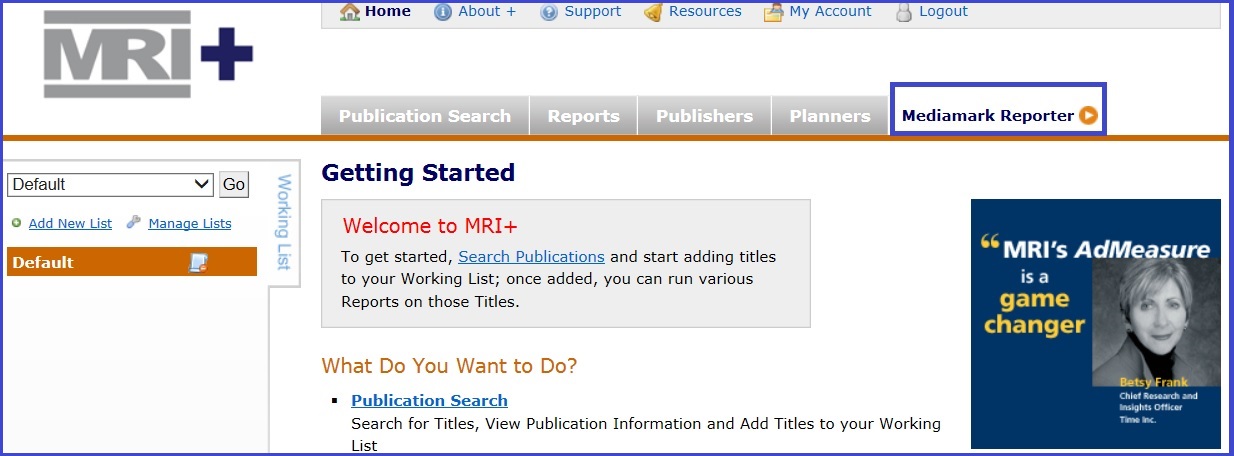157 14.4 Sources of Audience Data
Media organizations may conduct their own surveys or audience analyses for the purpose of understanding more about the types of content their readers/viewers want to see, or for managerial decisions about where to launch a new publication. Marketing and advertising firms may conduct a focus group to learn more about customer usage and opinions about a product or service. The results of a poll conducted by a PR firm might be used as part of a public relations campaign to persuade policymakers to make a certain decision that positively affects a client’s interests. We will discuss finding and using poll or survey information in Lesson 15.
In addition to their own internal surveys, media organizations use a number of tools to locate information about the audience characteristics we have been discussing.
Two major external sources for audience information are the syndicated services GfK MRI and Experian Simmons. Each company conducts more than 20,000 personal interviews annually in which they ask participants to record their product-purchase habits, their media-use habits and their demographic characteristics.

These services compile information into massive data sets, published in electronic form. The reports are used by magazines, television, radio, digital and other media, leading national advertisers and hundreds of advertising agencies to help determine what kinds of people purchase which kinds of products and use which types of media to learn about trends, styles, new products and events.
Let’s look at one of these tools to help define the types of audience data you can locate. The GfK MRI company site explains their product as follows:
Below is a quick listing of what the Survey of the American Consumer™ measures.
Demographics, Lifestyles & Attitudes
-
Age, Sex, Occupation, Income
-
Home Ownership
-
Children in Household
-
Business Responsibilities
-
Personal & Business Travel
-
Public Activities
-
Leisure Activities
-
Consumer Attitudes
-
Political Outlook
-
1,100+ Psychographic Questions
Product and Brand Usage
-
Usage Data for 6,000 Brands in 550 Categories
-
Groceries & Household items
-
Personal & Health Care Products
-
Tobacco, Candy, Snacks
-
Cars, Vans, Trucks & Motorcycles
-
Financial Products & Activities
-
Household Furnishings & Appliances
-
Apparel & Accessories
-
Consumer Electronics
Media Usage
-
Magazines
-
Television
-
Newspapers
-
National Newspapers
-
Radio
-
Internet
-
Yellow Pages
-
Mobile & Smart Phones
-
Outdoor
-
E-Readers[1]
You can see from this list that the GfK MRI company is collecting and analyzing an enormous amount of data about audience characteristics, product use and media use. A communicator can answer many of the audience-specific questions using one of these types of tools.
For example, if you need to know how to reach people who use mopeds or motor scooters, who shop in health food specialty stores, who live in the Northeast, who are between the ages of 25 and 34, who own a smart phone and who watch “The Tonight Show Starring Jimmy Fallon” on TV, these tools will help you identify them and understand how best to reach them with messages.
Gfk MRI data are available in the University library under MRI – Media Mark Reporter
- http://www.gfkmri.com/Products/TheSurveyoftheAmericanConsumer/SurveyMeasures.aspx ↵

